Media | Articles
4 tips for trailering your car like a pro
Own a vintage car long enough, and you will likely want or need to transport it via trailer. Broken parts or long distances that simply don’t suit vintage motoring style are the most popular reasons, but any number of things can put you in a situation where trailering your classic ride makes sense.
For instance, all of my vintage vehicles could drive down the road right now, but they wouldn’t be safe for me or others with whom I would be sharing the pavement. In this particular situation, local requests to keep to ourselves and distanced from those outside our immediate households added further complications: I needed to get my cars and motorcycles out of storage and transport them to my new garage without a pair of helping hands. So I called in a different sort of favor and borrowed a car trailer from a friend so I could do the job alone.
I went out, hitched up the borrowed trailer, and headed for the storage barn with all the gear to bring home my cars safely. Years ago, my first towing experience resulted in being rear-ended by my own parts car on the way to the scrapyard. Since then, I have learned a few tips worth sharing. Here are four to make sure your next trailering adventure goes according to plan.
Get the right equipment
Every piece of the towing equation matters. The key items are pretty obvious: tow vehicle, hitch, straps, and ramps. Start by inspecting each to ensure they will do their job safely. You don’t want to discover that one strap is frayed and unusable after the car is loaded and the other three corners already tied down. Look over your equipment with a fine eye before you even think about getting your vintage ride up on the deck.
Marketplace
Buy and sell classics with confidence
Your tow vehicle should have flawless brakes and working lights, plus a properly rated hitch for your load and trailer combination. Taking the extra time to inspect the running gear and nip any problems (like a leaking transmission gasket, or exhaust leak) in the bud now will keep you from the ultimate headache of having not one, but two vehicles stranded on the roadside.
The trailer should be inspected just as carefully as your tow rig. Start with the wheel bearings, lights, deck integrity, tires, and ramps. Make sure that the trailer is rated for the load you’re planning to strap onto it. Which bring up the straps. There are ratings for straps, and the same ones you use to secure the cooler in the bed of your pickup should not be used to secure your pride and joy to the trailer. There is no reason to skimp here, as a set of good 4-inch straps rated at 10,000 pounds of break strength can be purchased for under $200. You know what you can’t for less than $200? Just about any repair to a car that came loose on a trailer.
Get your weight right
I moved both my Ford Model A and my Chevrolet Corvair this week, and the difference between the two is more than just the 35-year age gap. The Corvair is a rear-engine vehicle, and thus its weight distribution is drastically different from the front-engine Model A. This difference was critical to remember when loading each car on the trailer and evaluating the proper tongue weight.
Tongue weight is the amount of weight that is on the nose of the trailer. Too much and your tow vehicle wants to put its nose in the sky; too little, and the trailer will sway and cause the tow vehicle to be unstable. This meant that the rear-engine Corvair actually needed to be backed onto the trailer. I probably could have gotten away with pulling the car on forwards, but its nose would have been all the way to the front of the trailer, which would have made strapping it down a real pain.
As you are putting the car on the trailer, watch the tow vehicle and pull the car far enough forward on the trailer to get the rear suspension of the tow vehicle to squat just a bit—not a lot, but a bit. It’s a Goldilocks type of situation, and sometimes it’s easiest to evaluate from a few feet away. Pull the car on the trailer and park it; then walk away for a second and observe whether it’s weighted properly. You can always adjust things—and should, if the balance isn’t right the first time.
Cross your straps—or don’t
Strapping down a car should be done carefully. There is a lot of force at play when the whole combination rolls down the road—even a smooth road. You do not want to strap the vehicle down in a manner which compresses the suspension, because it will transmit all that vibration directly to hard parts of the car rather than absorbing those impacts as intended.
Instead, you should secure the straps to unsprung parts of the car. Shock mounts (but not the shocks themselves), lower control arms, and solid axles are examples of safe areas. It is worth investing in a set of nice axle straps if your regular straps aren’t equipped with a soft loop end. This makes it easier to attach a strap without damaging the finish of your vintage ride.
I prefer to cross the straps at each end of the car, because that arrangement lets me use straps longer than two feet—which I prefer, because a longer strap will have more give as things bounce down the road. On a trailer like the one I used, I didn’t have another option, since there were no attachment points on the deck. I couldn’t use wheel straps over the tires or pull the straps in line with the cars.
However, the Corvair didn’t have an attachment point under the rear end that I felt comfortable using to pull the straps across the trailer. So I crossed the front straps and pulled the rears back at very slight angle. Sometimes that’s just how you have to do it.
Whichever arrangement you choose, ratchet the straps down until they are taut. They should just barely give if you step on them. Neatly roll the loose ends and tuck them under the tensioned straps to prevent them from flapping in the wind and damaging the vehicle. (If you’re in an enclosed trailer you can ignore this part—and enjoy the fact that I’ll be quite jealous.)
Stop and check
With your car (or cars) on the trailer and secured, it is time to drive. In addition to other basic trailering advice (remember the trailer is back there when going down the road!), it’s essential to keep tabs on the straps as the miles roll by. Drive 15–20 minutes and then pull over to check the status of everything. Straps tend to loosen as the car shifts and squirms on the trailer while it bounces down the road. Spotting a strap that is slightly loose can prevent significant damage. While you’re stopped, take stock of how the trailer is pulling and see whether the tongue weight is set up properly. If everything checks out, continue down the road and be sure to check everything again with each stop.
Towing your treasured ride on a trailer can be stressful, but with just a bit of preparation, it’s entirely possible to do safely. I learned from my mistakes—though I have since learned that mistakes aren’t the best way to acquire this knowledge. Do you have additional tips for someone trailering their vintage car? Leave them in the comments below.


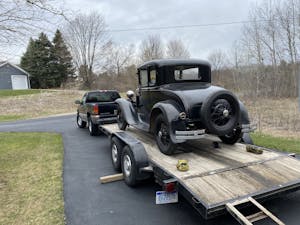
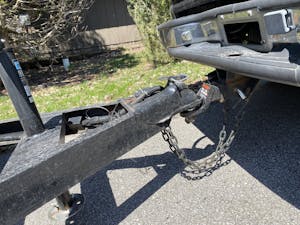
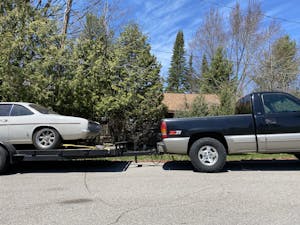

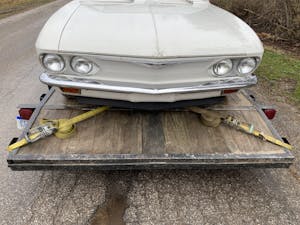
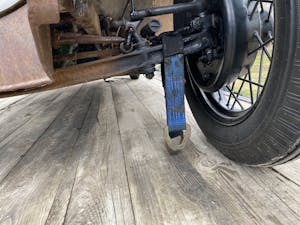
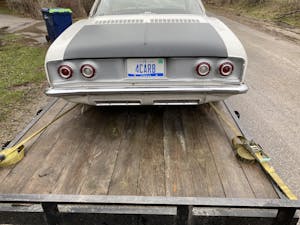
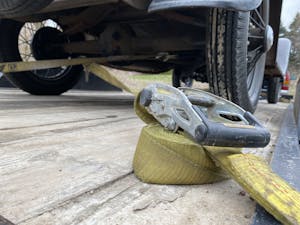
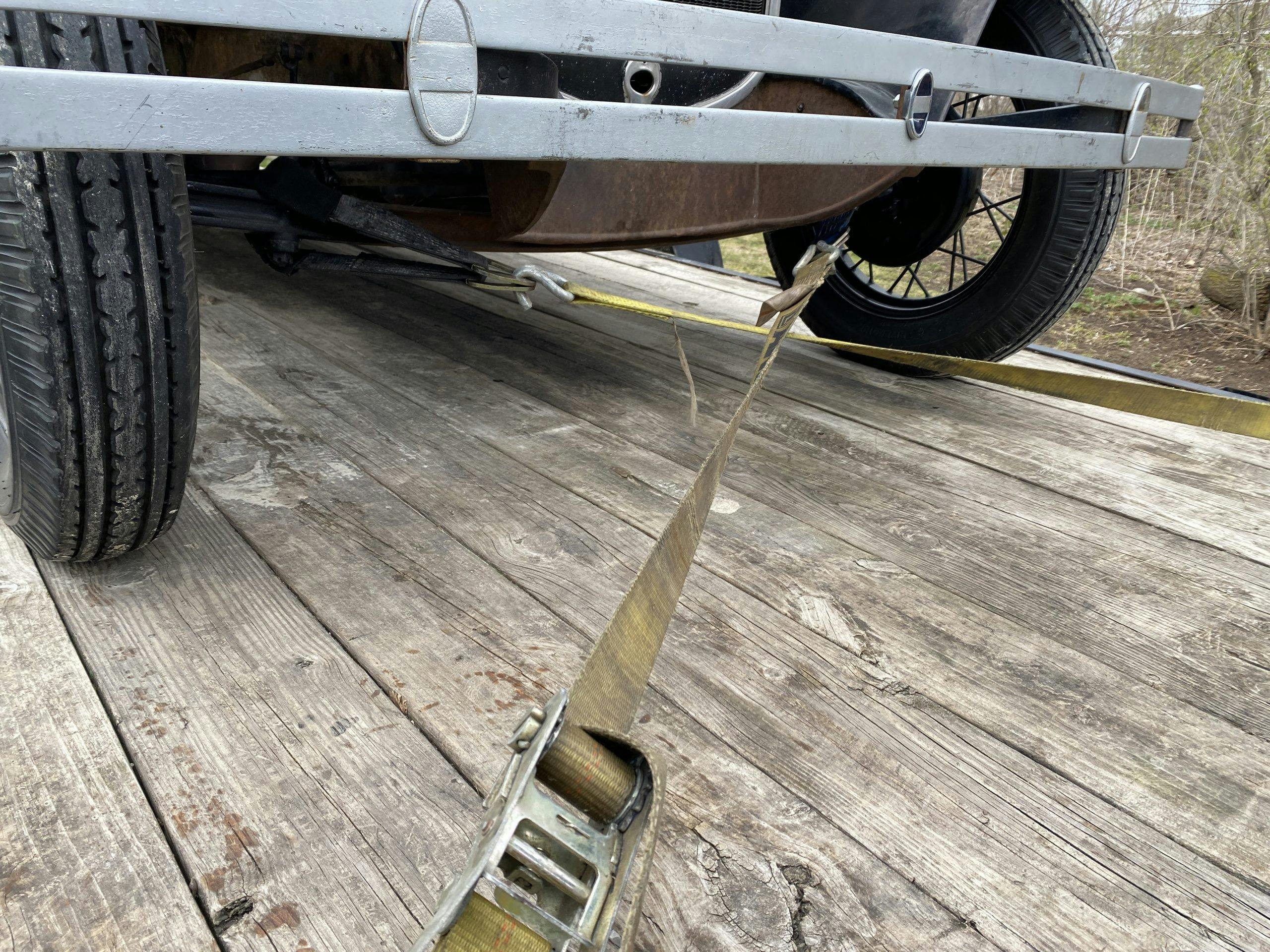
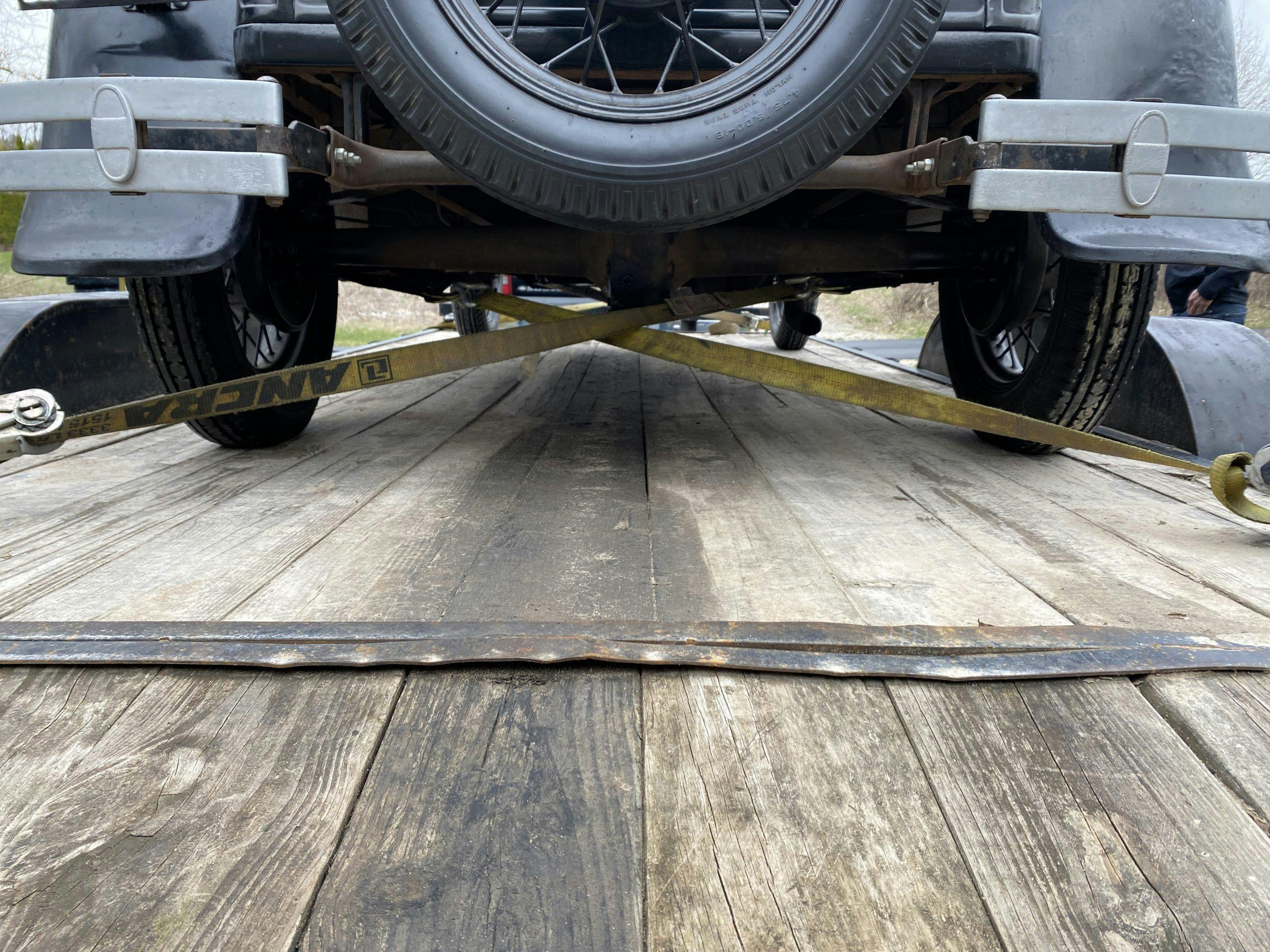
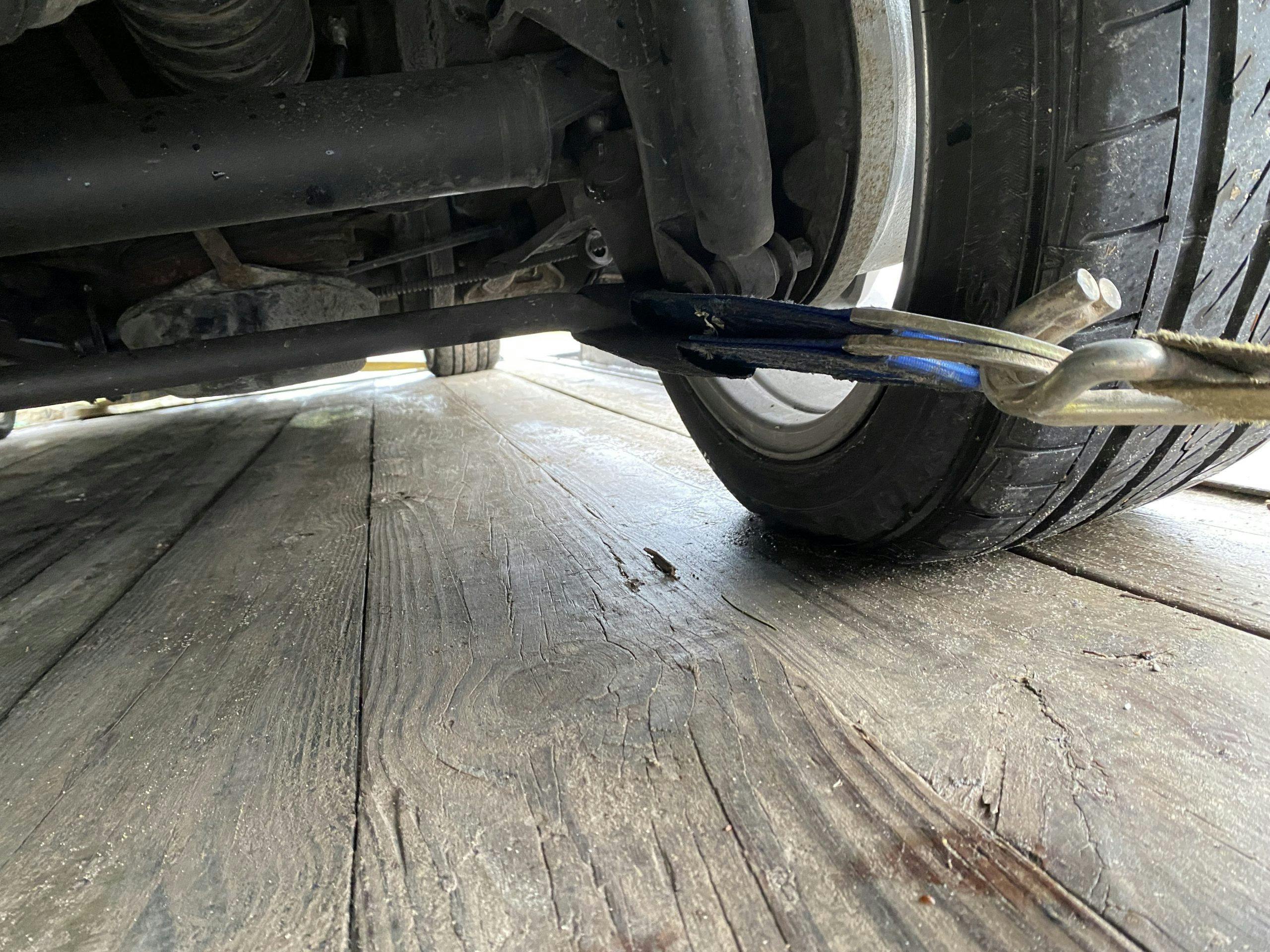
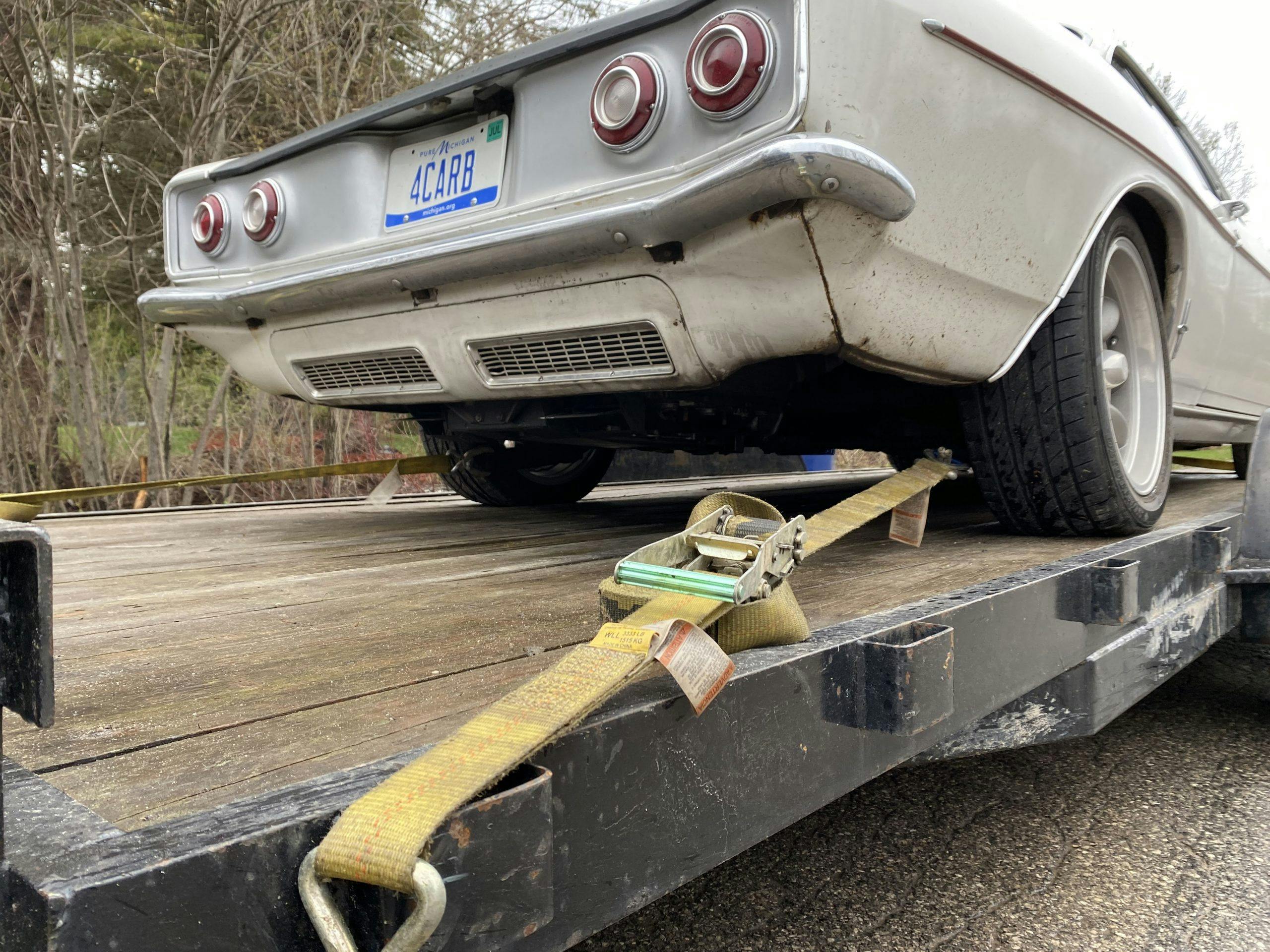
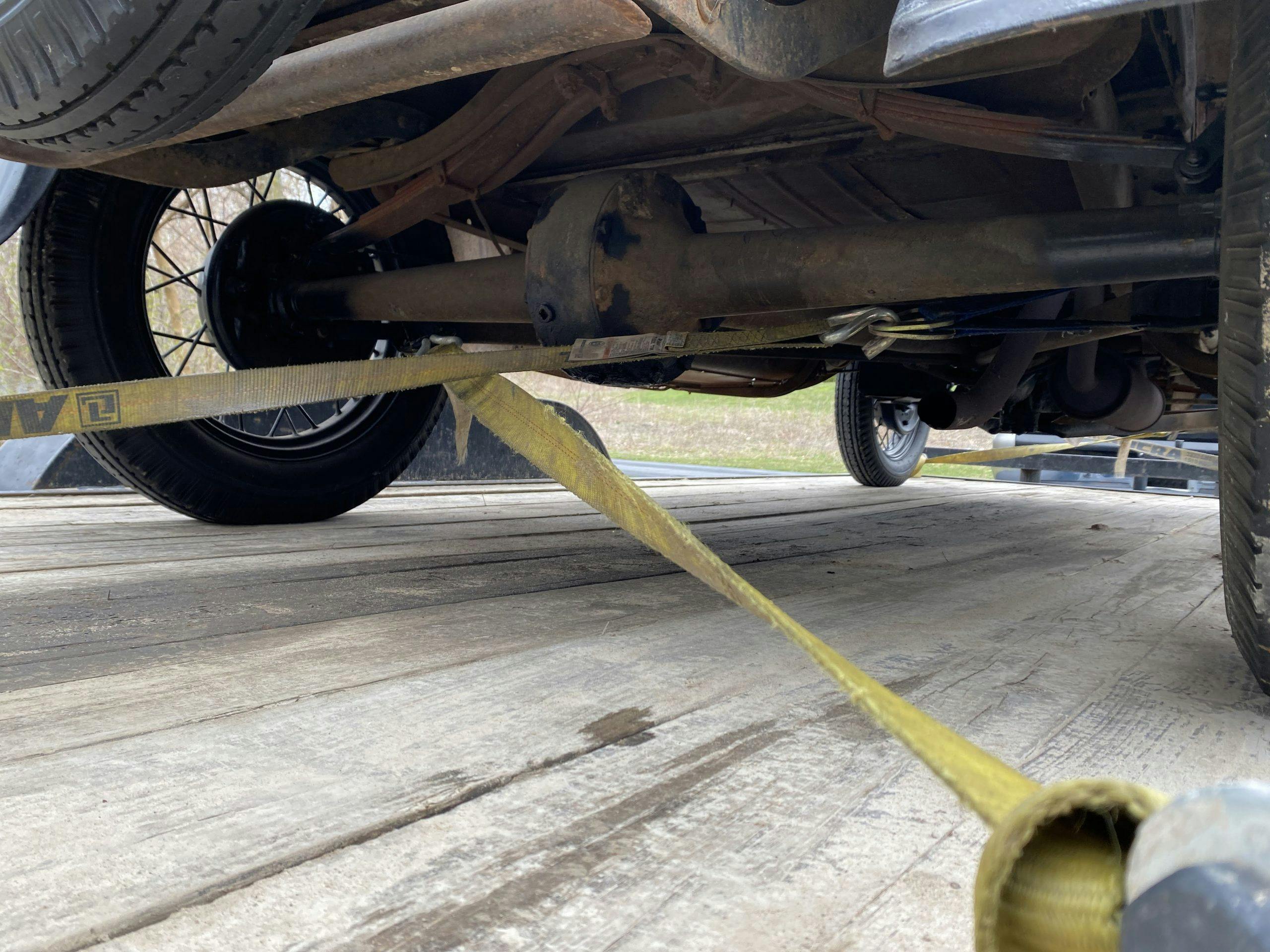
















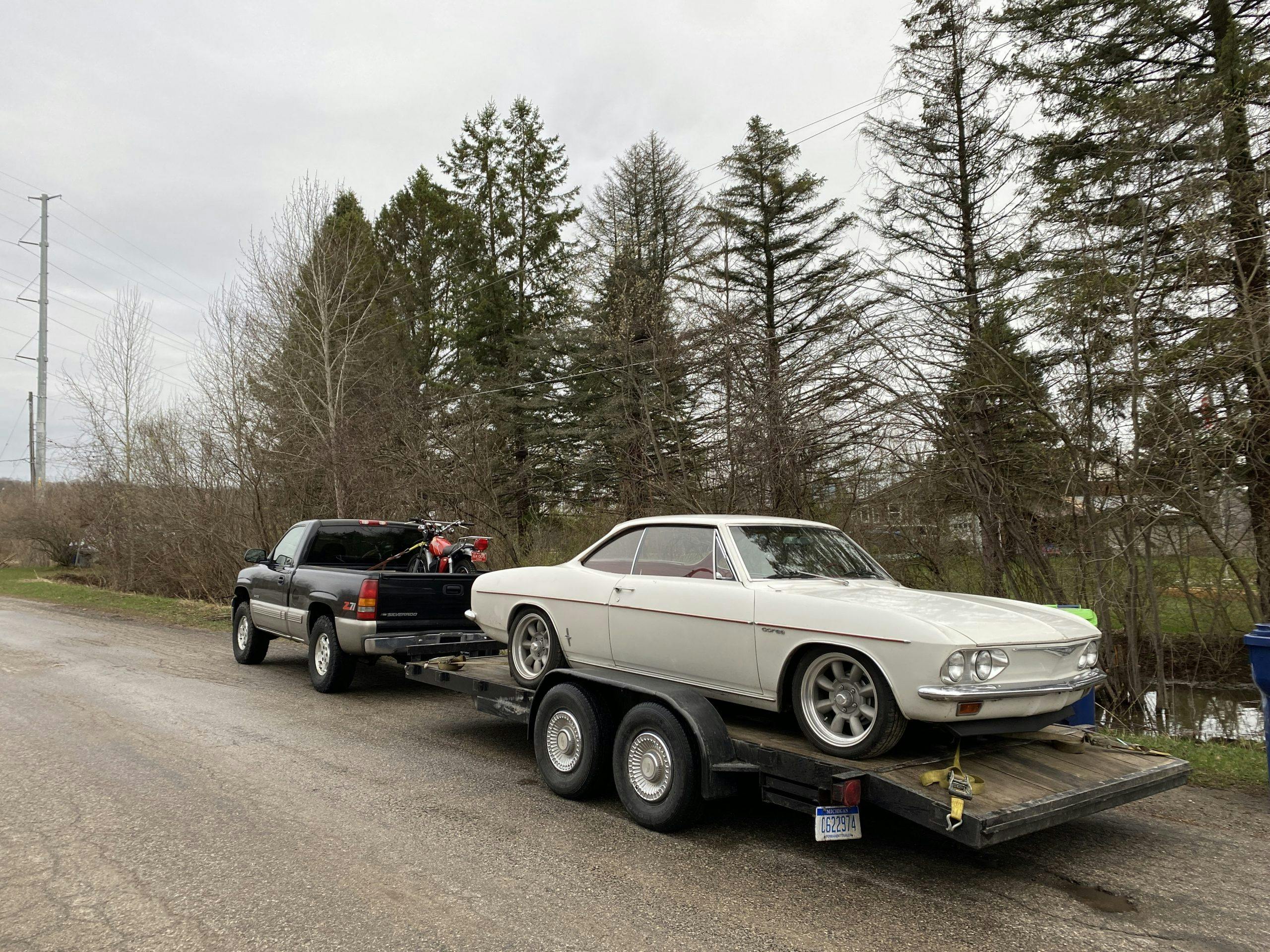
On a manual transmission do I leave the car in neutral after strapping it down
My brother wants to buy a trailer for his cattle transportation next month. I think he’d benefit from reading your post since it’ll be the first time he ever trailers a vehicle. I’ll share your post with my brother to ensure he makes a stop often to check the status of his trailer and avoid safety issues. https://www.acetrailersales.com/all-inventory/equipment-trailers